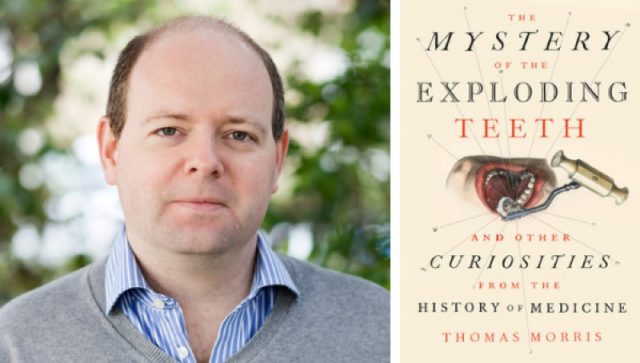While researching his 2017 book on the history of heart surgery, medical journalist Thomas Morris perused hundreds of journals from the 19th century. One day, a headline on the page opposite the one he was reading caught his eye: "sudden protrusion of the whole of the intestines into the scrotum." It was a bizarre case from the 1820s, involving a laborer run over by a brick-laden cart. The resulting hernia forced his intestines into his scrotum, and yet the laborer made a full recovery.
Once he got over his initial amused revulsion, Morris was struck by the sheer ingenuity displayed by doctors in treating the man's condition. And he found plenty of other similar bizarre cases as he continued his research, with people surviving truly horrifying injuries—a testament to the resiliency of the human body. "Doctors, even when they had less than a tenth of the knowledge we do today in terms of treating major trauma, could still come up with innovative and ingenious solutions to acute problems," he said.
Many of the most interesting medical cases Morris uncovered are featured in his hugely entertaining compendium of medical oddities, The Mystery of the Exploding Teeth, and Other Curiosities From the History of Medicine. Regular readers of his blog (tagline: "making you grateful for modern medicine") will revel in stories about a sword-swallowing sailor, a soldier who removed his own bladder stone, a man with combustible belches, a woman who peed through her nose, and a boy who inhaled a bird's larynx and started honking like a goose. All are delivered in elegant prose, punctuated with the author's distinctive dry wit. Morris has collected 500 or so of these frequently jaw-dropping cases thus far, and only included 70 or so in the book. So a sequel (or two) isn't out of the question

The titular case concerns numerous 19th century instances of people experiencing an increasingly painful toothache, followed by a sudden crack, akin to a pistol shot, as the tooth exploded, conferring instant relief. The burst was sufficient to nearly knock over one young woman, partially deafening her for several weeks after.
Why did the teeth explode? Several theories were proposed, such as tooth decay causing a build-up of gas that led to a fracturing of the tooth, perhaps from the chemicals used to make early fillings. But there's no record of any of the patients experiencing exploding teeth having had fillings. The cause remains a mystery to this day, and no case has been reported in the medical journals since the 1920s, according to Morris.
One of the more memorable cases Morris describes concerns a 25-year-old man in San Francisco, who was critically injured in 1858 when an old shotgun exploded in his grasp, driving a large slug of iron into his chest. A celebrated surgeon of that era, Elias Samuel Cooper, didn't have access to modern technologies like x-ray imaging to help him locate the metal, which had lodged just under the man's heart.
So he opened up the ribcage and just started rummaging around. Initially he did this without anesthesia, although when it came time to reach into the chest cavity and remove the slug, Cooper mercifully provided some (likely ether). "The idea that a surgeon in 1858 would put their hand underneath a patient's heart—I'd never come across anything like that in many years of researching heart surgery," said Morris.
"There is an amazing propensity of humans to do really stupid things involving sticking foreign objects into their orifices."
An entire section is devoted to treatment of various objects stuck into people's orifices—like the 16th century monk who inserted a perfume bottle up his rectum, presumably to "relieve the cholic," or so the monk claimed. "There is an amazing constant propensity of the Read More
[contf] [contfnew] 
Ars Technica
[contfnewc] [contfnewc]






